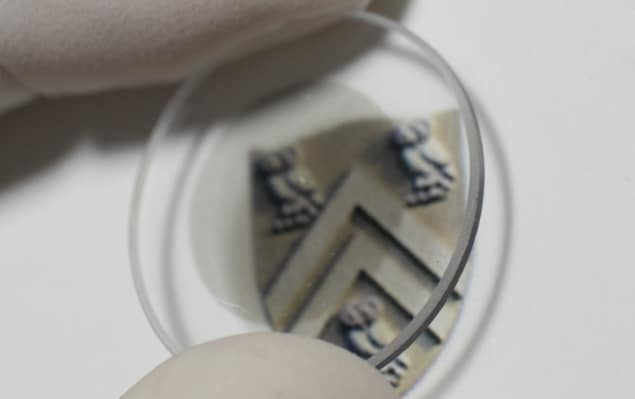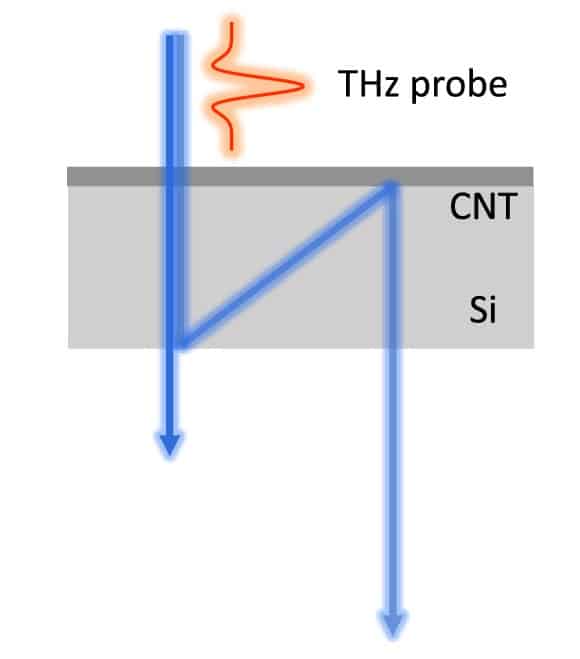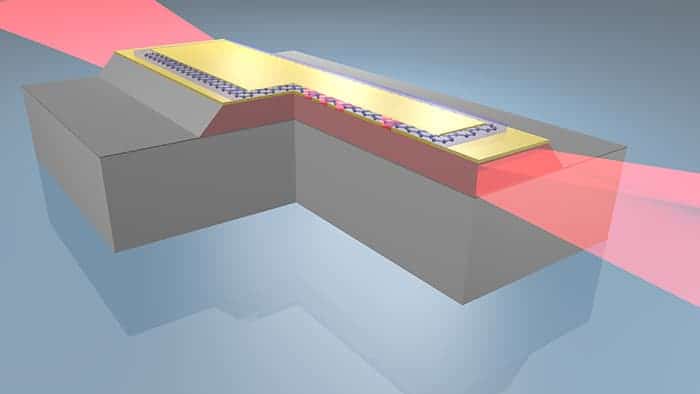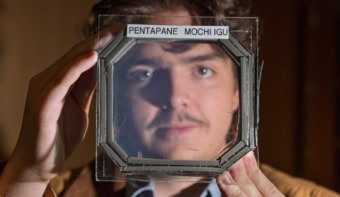
A new device for rotating the polarization of terahertz radiation has been created by accident by researchers in the US. While practical applications remain unclear, the discovery could boost the bandwidth available to personal electronic devices like smartphones.
The terahertz region of the electromagnetic spectrum falls between the microwave and the infrared. It has numerous current and potential applications ranging from detecting concealed objects to telecommunications. However, the lack of convenient terahertz sources and other components has created a “terahertz gap” that has frustrated greater exploitation. Now, researchers at Rice University in the US may help close the gap by developing an ultrathin, broadband carbon-nanotube based device that can rotate the polarization of terahertz radiation by angles of 90° or more.
Controlling the polarization of electromagnetic radiation is crucial in numerous areas of science and technology. Control is particularly tricky in the terahertz region and rotating polarization usually involves a quartz wave plate about 1 mm thick.
“Even 1 mm is very thick to have as part of a modular device in something like a smartphone”, says Rice physicist Andrey Baydin, pointing out that this is an obstacle to using terahertz in consumer electronics like smartphones – which currently use microwave frequencies – in order to boost data transmission. Moreover, these waveplates have no tunability and work over an extremely narrow band of frequencies.
Aligned nanotubes

In the new research, Baydin and colleagues chanced upon an alternative to the quartz wave plate after depositing a solution of aligned single-walled carbon-nanotubes (CNTs) onto a silicon substrate. The resulting nanotube film was analysed using terahertz time domain spectroscopy, in which a terahertz pulse is fired through a sample and the substrate behind. Some of the pulse goes straight through the sample and substrate and arrives at a detector. Some of the pulse is reflected at the silicon-air interface and goes back into the sample (see figure). There, it reflects from the CNTs and emerges again to be detected as a second pulse. This technique allows researchers to perform transmission and reflection spectroscopy simultaneously on their samples.
In their experiment the input pulse has a normal incidence on the sample, which the researchers rotated to vary the angle between the polarization of the input pulse relative to the orientation of the nanotubes in the film. They discovered that at a specific “magic” angle, the polarization of the second pulse was rotated exactly 90° relative to the input pulse. This magic angle was 30˚ in their sample, but its value depends on the thickness of the nanotube film and substrate, as well as the refractive index of the substrate.
Baydin says that their results came as a big surprise: “we were simply characterizing these nanotubes”.
Their curiosity piqued; the researchers created a mathematical model to gain a better understanding of the observed effect. “The refractive index and absorption coefficient are very different along the nanotubes and perpendicular to the nanotubes,” explains Baydin.
Broadband effect
As a result, the input pulse that approaches the nanotubes from one side behaves differently from the reflected pulse that approaches the nanotubes from the other side and at a different angle. This gives rise to the remarkable effects observed. The effect is more broadband than seen the traditional waveplates. Moreover, as the nanotube films are inherently anisotropic, dramatic variations in the properties of the surface should be achievable simply by rotating its angle relative to the light source.

Plasmons call the tune in new graphene-based terahertz laser
“[Baydin and colleagues have] done a lot of work using carbon nanotubes as components in terahertz polarizers,” says Peter Armitage of Johns Hopkins University in the US. “Incorporating a thin-film geometry like this and silicon – which is a conventional material in the semiconductor industry – means one can take this kind of thing and incorporate it into terahertz-range optoelectronic devices. I wouldn’t say it’s an exotic effect but it’s quite remarkable that you can take these kinds of components, arrange them in this fashion, and get out this very large rotation of terahertz light.”
The next step, says Armitage, is “trying to incorporate these elements into actual devices”. Some of these devices, he says, may be laboratory ones. He gives the example of his own research, which involves using terahertz radiation to probe material properties. “The anisotropies in the polarization response tell us different things about a material,” he says. “For that, you don’t usually care if [your components] are bulky but you do usually care if they’re broadband. This is a way of treating all frequencies reasonably equally.”
The research is described in Optica.



